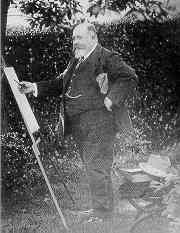Friends of Hastings Cemetery


Furniss lived at High Wickham ( no 8,which is now no 12) in Hastings Old Town from 1904 until his death in 1925. He also had a studio at East Cliff House.
On some projects, like his illustrations for G. E. Farrow's Wallypug books, Furniss collaborated with his daughter, fellow artist Dorothy Furniss (1879–1944)
When he died there were various drawings, caricatures, book illustrations etc which were lying in his old house here in Hastings [where the artist was living at the time of his death]. Unfortunately they were in great confusion and had been rather badly neglected but there was a total of around 3000 items!
Furniss Talks
30/04/1891
The well-
Harry Furniss Again
From the Hastings News of 20/01/1893
The popular local personality Harry Furniss put on a two-
British caricaturist and illustrator, best known for his political and social lampoons.
Mainly self-
He was very short (and broad, he says). He wrote and illustrated his travels in America and Australia. He was often confused with Harold Furniss, who was also apparently a caricaturist, and a journalist, illustrator, and collector of criminal literature.
- "Altogether, his was a life of extraordinary industry. He will be remembered as a most fertile delineator of the Victorian scene.” -
The Times - “He was full of energy and enterprise, full of fire and spirit, of fun and robust spirit, of powerful feelings, honest ambitions and unfailing resources” -
Magazine of Art
Alan Coren, the Editor of Punch, at the time of the proposal to remove gravestones under https://friendsofhastingscemetery.org.uk/77order.html wrote a letter in support of preserving Ffurniss’s headstone, saying he was a leading figure at Punch for about 30 years, and one of Punch’s best-